Enchanted Gardens | Fermenting hope among leftovers
Communities 'bokashi' to fight climate change and food waste in the Philippines
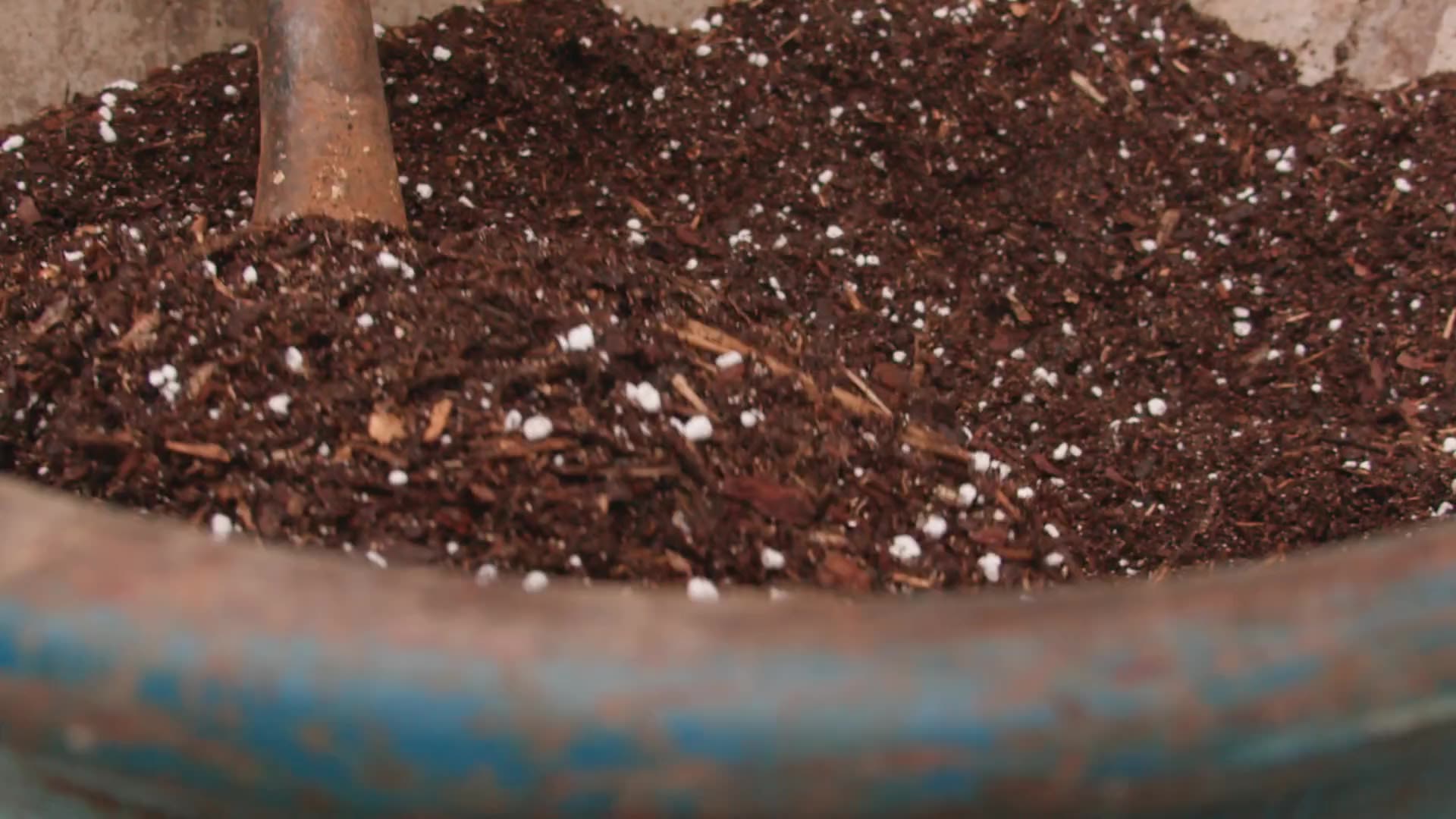
For the residents of San Antonio village, a bustling business district in Pasig City in the Philippine capital region, the 500-square-meter urban garden in General Delgado Street has been a source of affordable organic produce.
Emma Lique, a 61-year-old supervisor of eight local government-hired street sweepers and garden custodians, says that growing farm produce within the village eliminates the need to pay for transportation.
She says the communal garden also saves on fertilizers because residents have been providing the gardeners with a steady supply of bokashi food waste that they converted into soil amendments since 2020.
Developed by Japanese agronomist and biologist Teuro Higa in 1982, bokashi is a composting method that ferments organic material in an airtight container using rice hull or bran inoculated with effective microorganisms (EM) and molasses to ferment food waste.
Melody Melo-Rijk, Sustainable Consumption and Production project manager of World Wide Fund for Nature (WWF) Philippines, says aside from producing fertilizers, bokashi composting is also “one way to divert food waste away from landfills.”
Organic waste that decomposes openly in landfills creates methane, a potent greenhouse gas that causes global warming. Across the globe, WWF estimates that about 2.5 billion tonnes of food are wasted each year.
A survey conducted by the country’s Department of Science and Technology – Food and Nutrition Research Institute, reveals that the Philippines generates 1,717 metric tons of food waste per day.
By composting food waste, Melo-Rijk says that “we can collectively reduce the amount of greenhouse gases trapped in the atmosphere, causing global warming.”
Food waste problem
Over 20 years ago, former president Gloria Macapagal-Arroyo signed the Ecological Solid Waste Management Act of 2000 into law, requiring local governments in villages to set up its material recovery facility and composting site. However, villages vary in size—many do not have the space for it.
As of 2021, the Commission on Audit’s report on the solid waste management program finds that the country has 11,637 total material recovery facilities or MFRs, servicing only 16,418, or 39.05 percent, of the total 42,046 villages.
“Only less than 10 percent of the villages’ MRFs have composting sites,” Melo-Rijk says. Apart from the lack of effort in educating consumers and business sectors, she laments that “most garbage collectors still mix everything up even if wastes are segregated at home.”
Lanie Francisco, founder of Bokashi Pinoy, who has been introducing the method to a few villages in the capital region since 2020, observes that some villages are starting to address waste management issues, particularly food waste.
One village had imposed a strict “no segregation, no collection” policy while others invested in biodigesters and rapid composters that were underutilized.
“Not everyone has the time to transport their kitchen scraps to the facility. Some of the equipment requires at least 300 kilos of feedstock to operate,” Francisco reveals. The organic material started to rot even before the village officials gathered enough to fill the composter.
In the past, her social enterprise donated 409 pairs of buckets to a village but they were left unused. After three years, the village received 25 small biodigesters, which they used immediately. However, the communities that live nearby complained about its smell.
“I wondered why they didn’t give bokashi a chance. It does not smell if you do it correctly," she says. “Granted, bokashi is not the only solution. But whatever technology you bring into the community, you should consult the community and run a test with them first.”


Engaging communities
Dialoguing with village and city local government officials was the last thing on Francisco’s mind when she first discovered the wonders of bokashi only ten years after it was invented.
All she wanted was to find an alternative to the pungent chicken manure she used as fertilizer at her 2,000-square-meter organic farm in Nueva Ecija province, north of Manila.
Francisco’s first batches of bokashi went bad as she found black molds infesting the entire bucket—a sign that the organic material was decaying, not fermenting.
Realizing that the weather conditions and food waste generated by the Japanese were different, she tweaked her recipe until she figured out what works in a tropical country and shared it with her friends, who returned to her asking for more.
"When I was running out of rice hull, my friends suggested to source it elsewhere. That's when I went to the farmers and discovered that they did not work during summer because they didn’t have water for irrigation. But they have plenty of rice hull," Francisco says. “So I started working with them.”
In March 2020, she quit her day job and pursued her Bokashi Pinoy business full-time—oblivious to the coronavirus that would plague the country. Stuck in her home, Francisco filmed herself live on Facebook to demonstrate how bokashi is done.
One of her followers happened to be a San Antonio village resident who spearheaded the ‘Basura to Ayuda’ (trash to relief goods) project with the village officials to encourage people to exchange their recyclables for a kilo of rice or vegetables. The two worked with the village officials to include bokashi in the program.
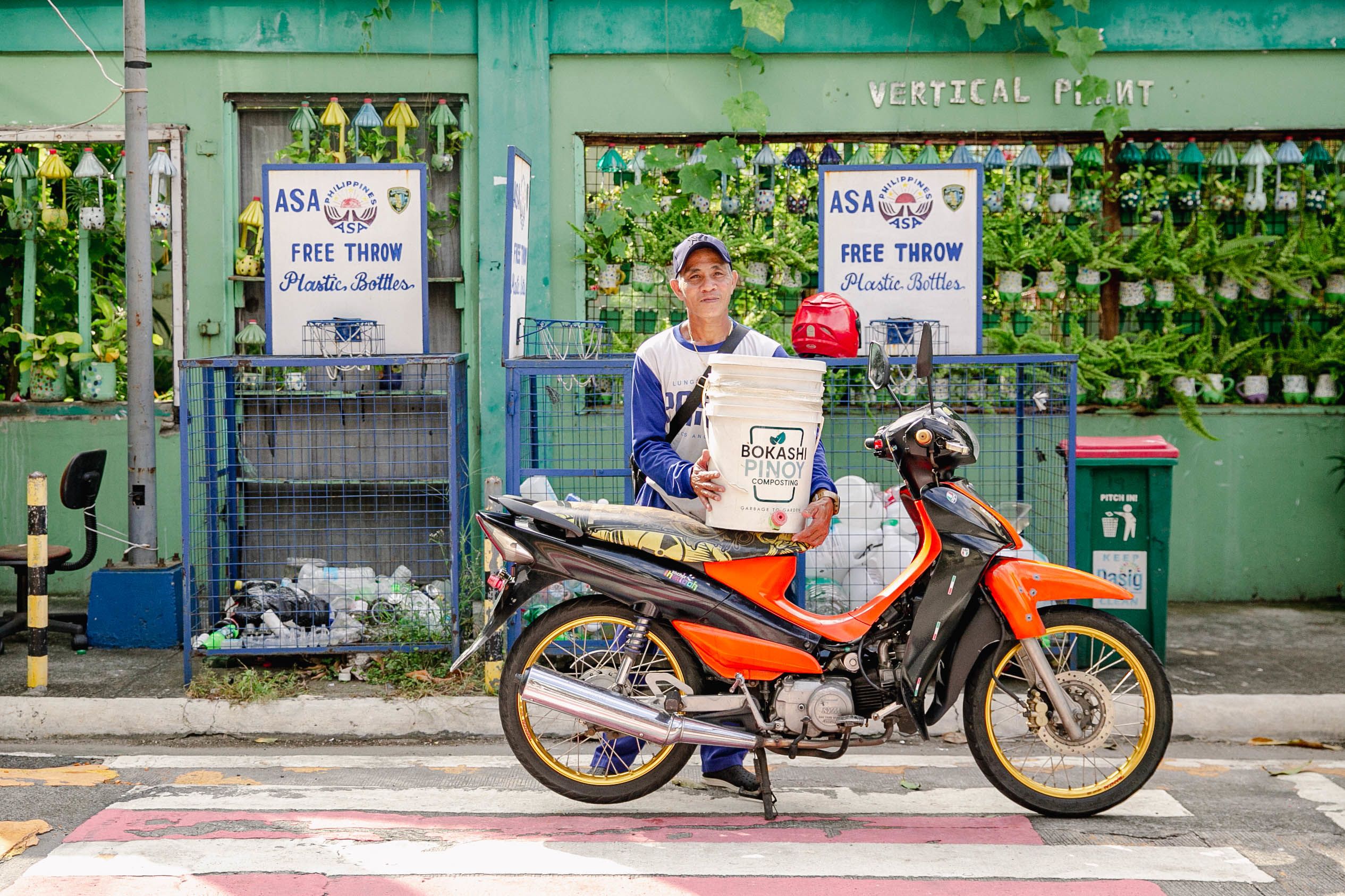
Joseph, a street sweeper and gardener, arrives at the San Antonio village’s urban garden after picking up a bucket of bokashi food waste from a resident in Mandaluyong, a city that is boarded by Pasig City to the west. According to him, some of the residents drop off their buckets on their own. But they can also schedule a pick-up for residents who live nearby.
Joseph, a street sweeper and gardener, arrives at the San Antonio village’s urban garden after picking up a bucket of bokashi food waste from a resident in Mandaluyong, a city that is boarded by Pasig City to the west. According to him, some of the residents drop off their buckets on their own. But they can also schedule a pick-up for residents who live nearby.
“I wish all villages were like San Antonio. The residents and village officials support each other,” Francisco says. “I had difficulties working with other villages but I kept going because my faith is stronger. My advocacy is anchored in Laudato Si’. I’m doing this because I care about God’s creations.”
Laudato Si’ is Pope Francis' encyclical on the protection of the environment. The document encourages people to recognize the interconnectedness of all living beings and the Earth, urging a collective effort to address environmental issues and promote sustainable practices for the well-being of present and future generations.
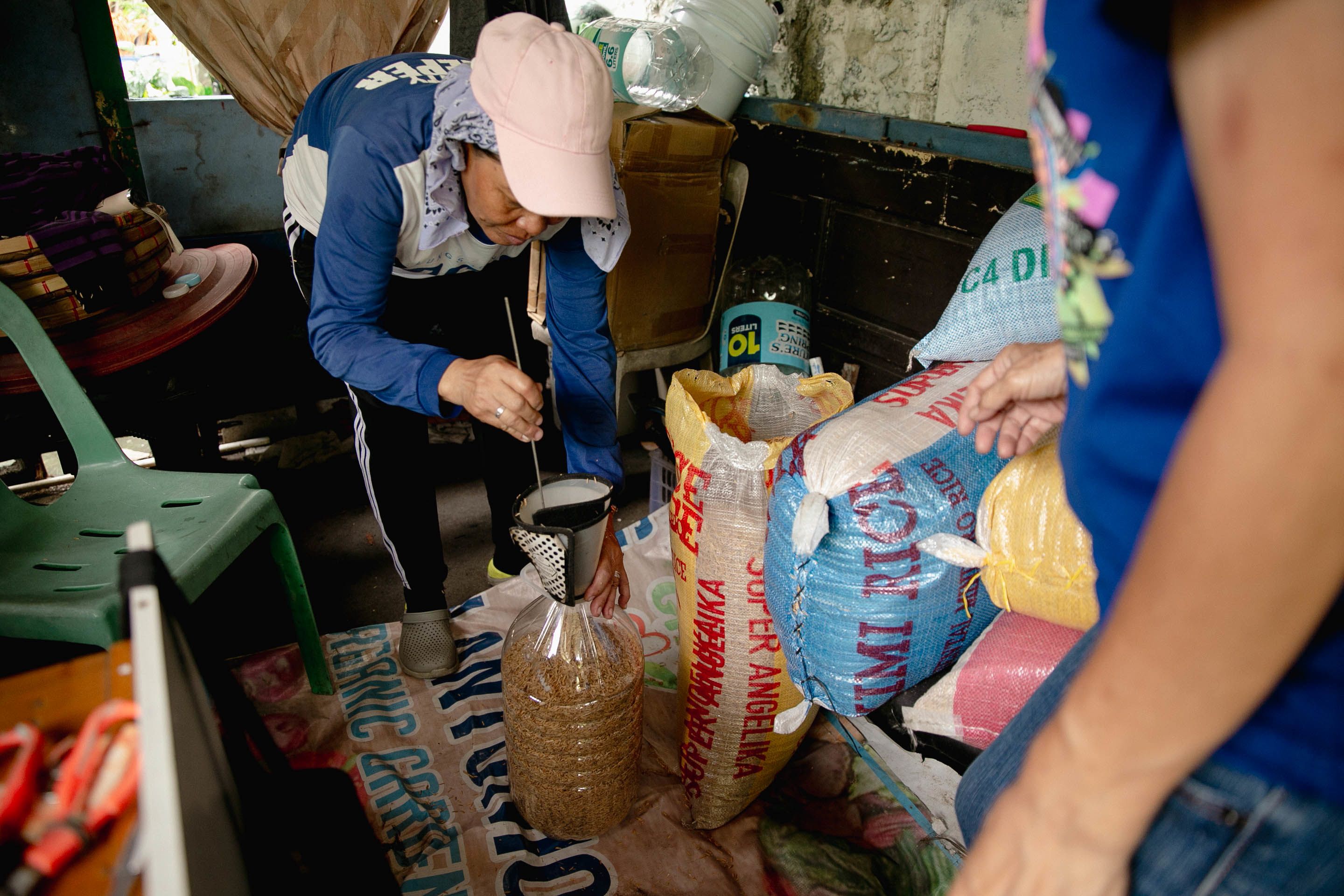
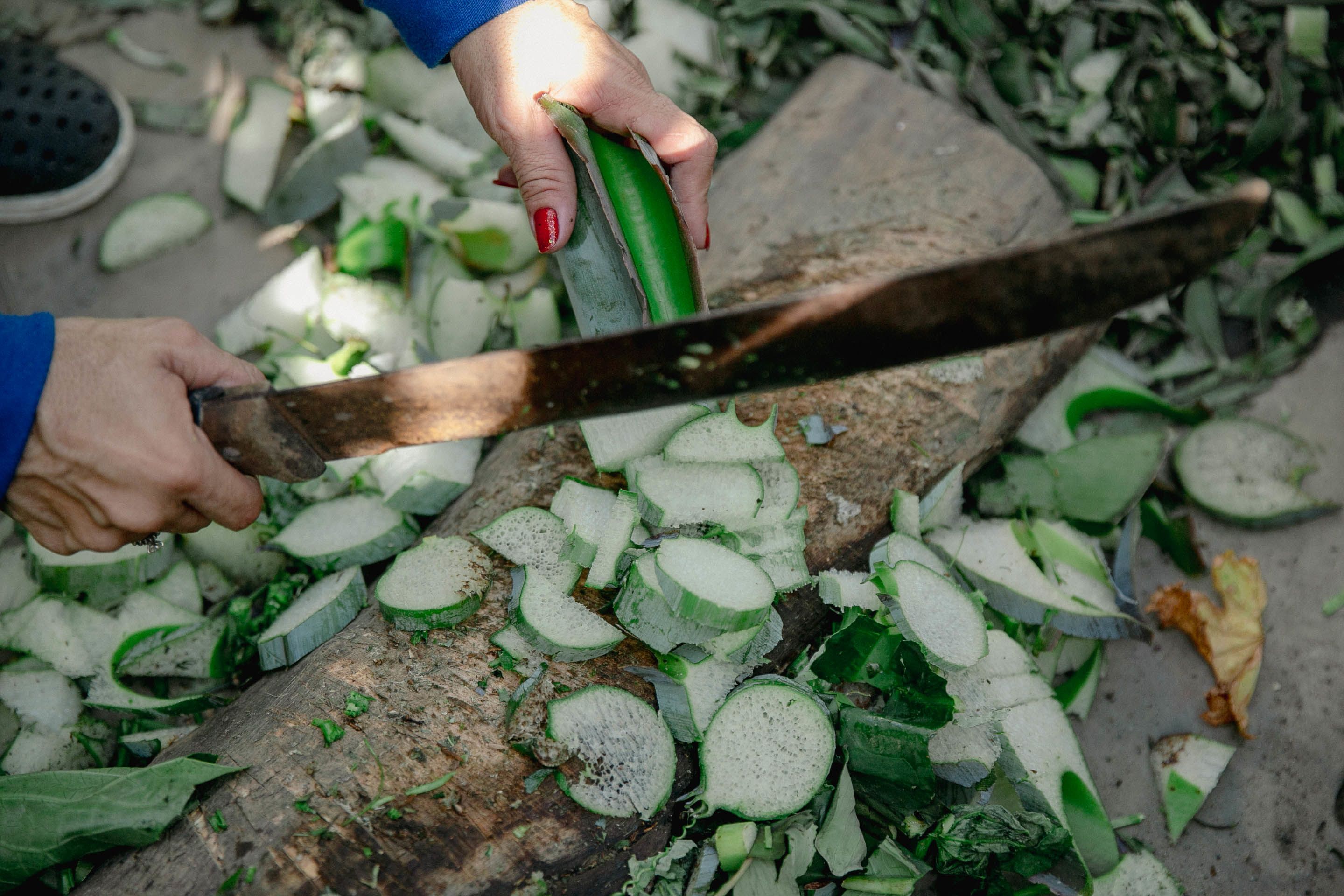
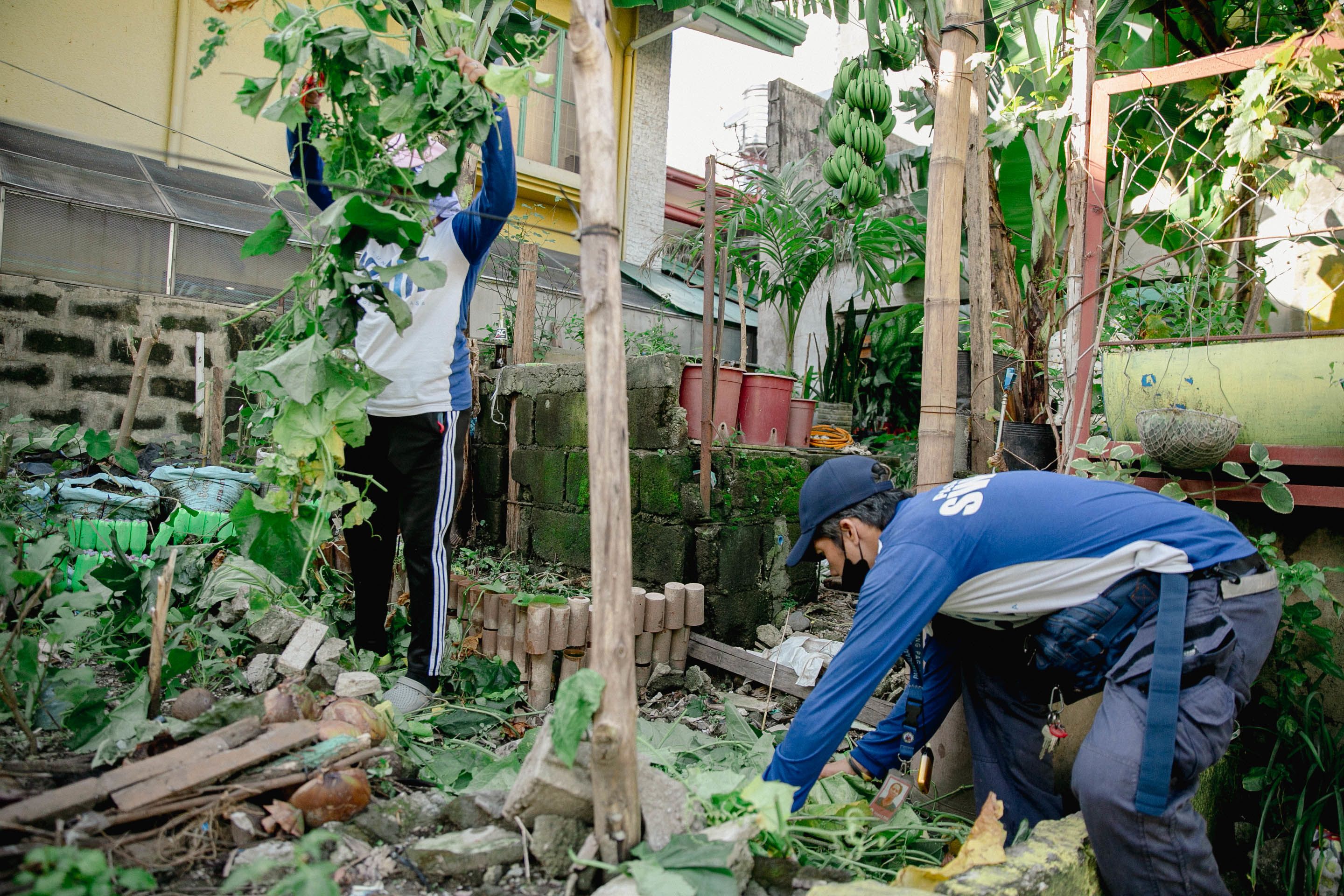
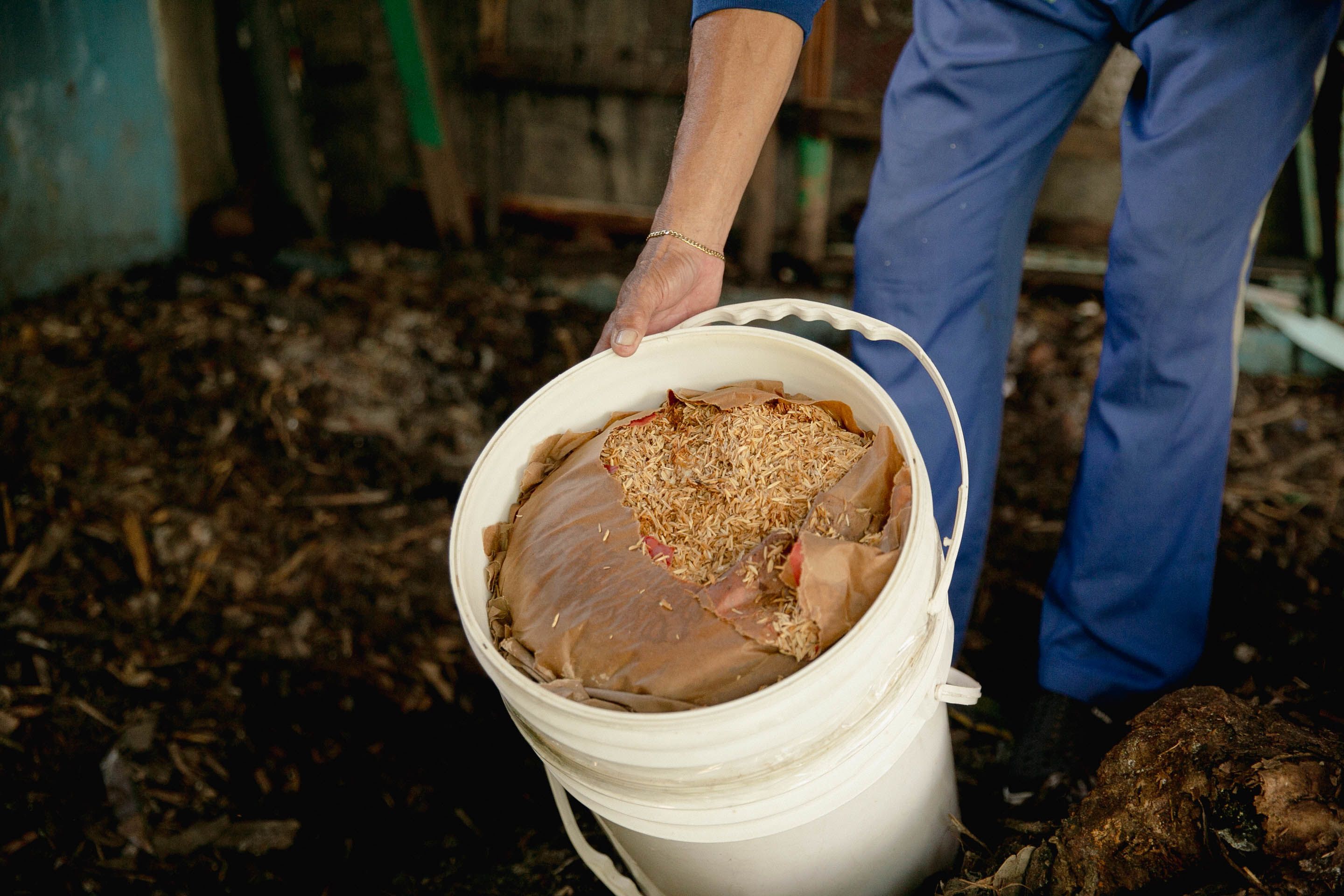
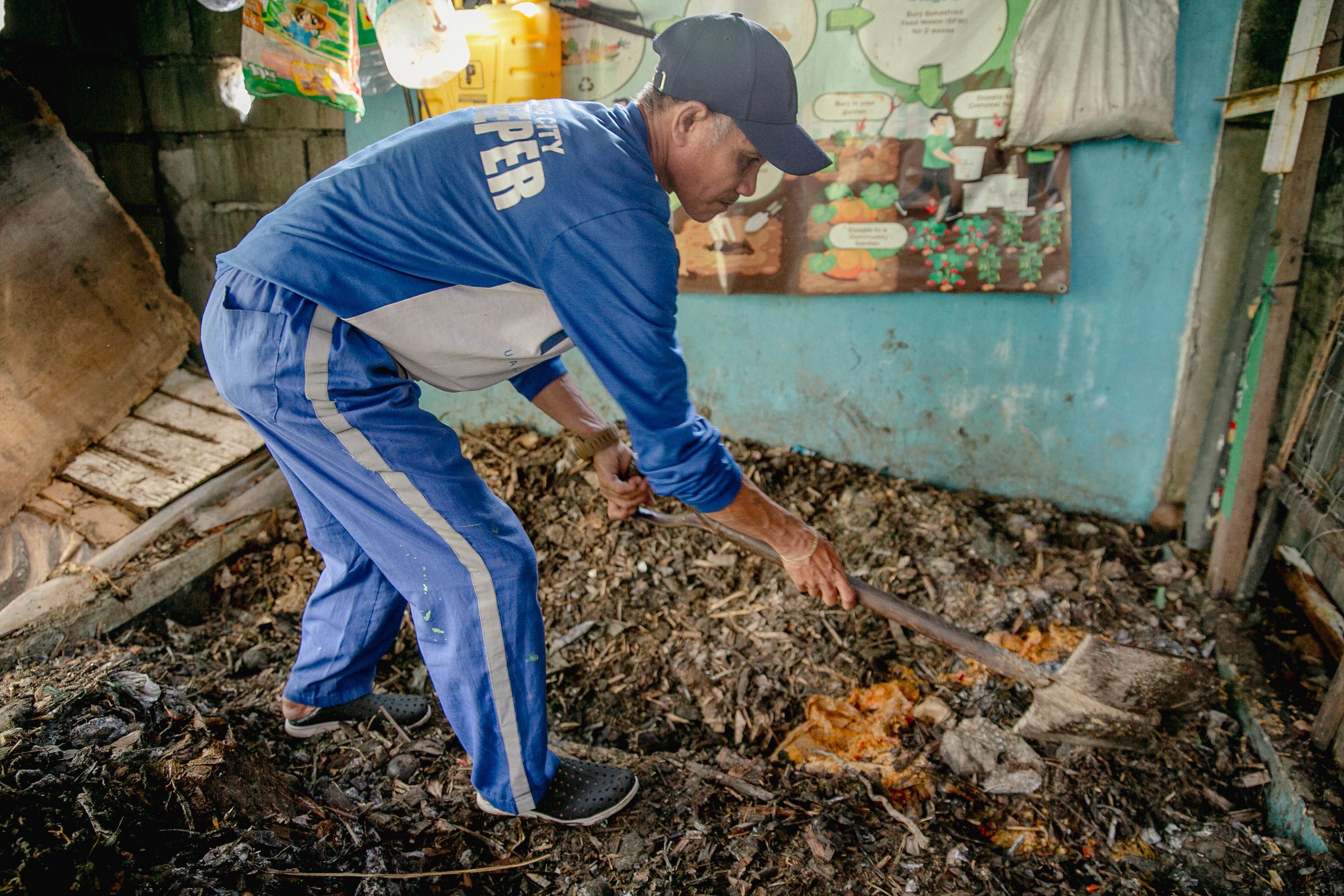
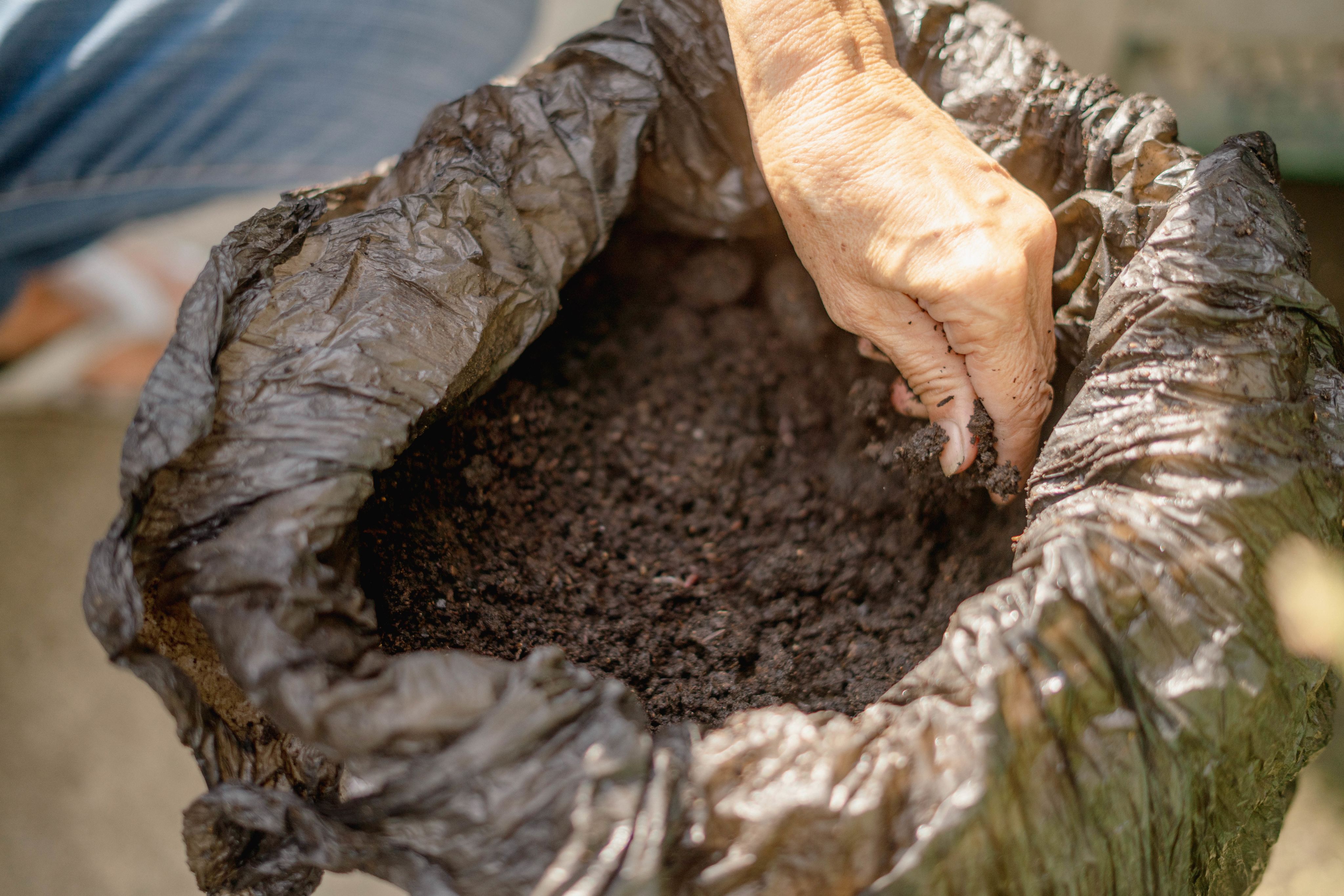
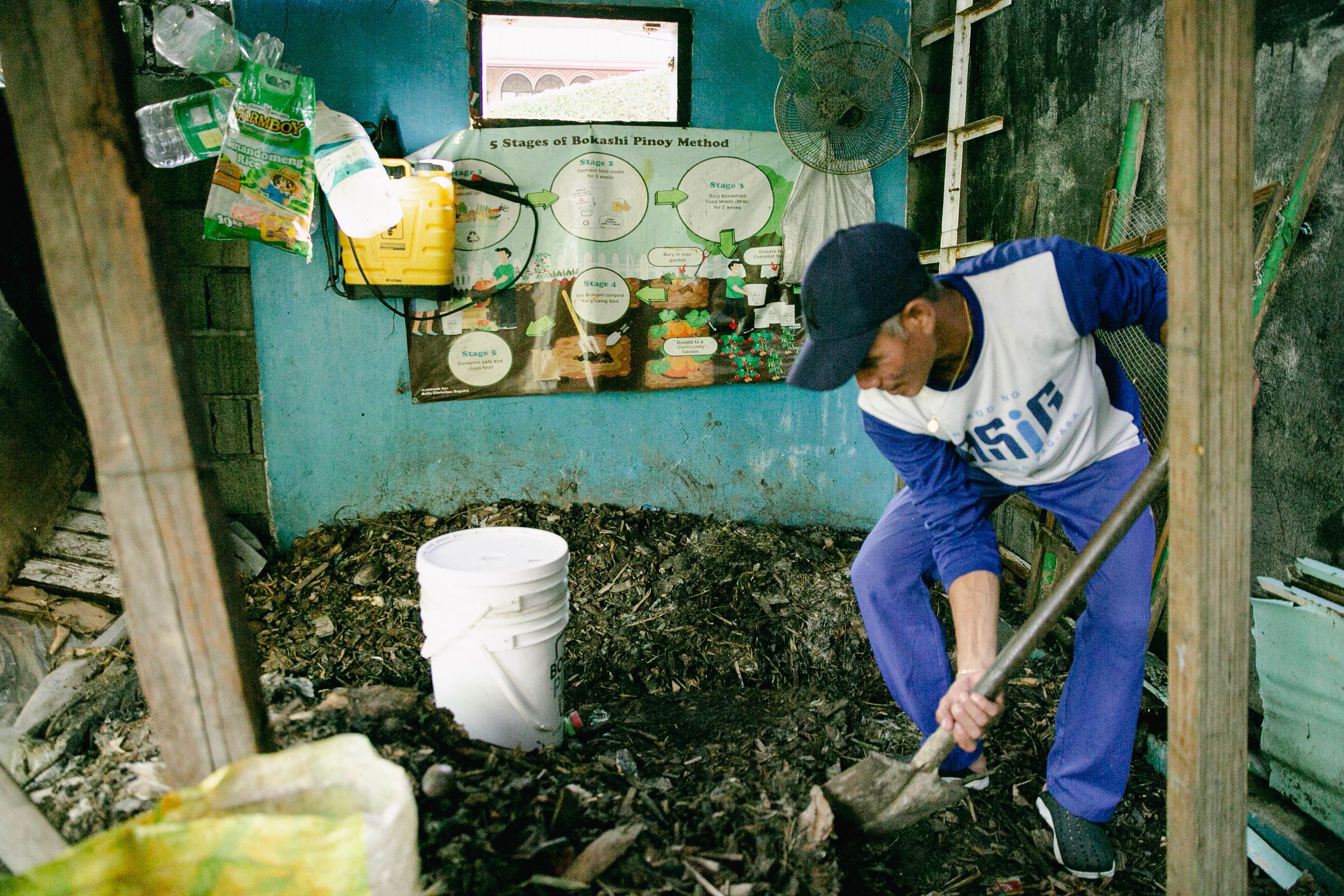

A San Antonio village garden custodian transfers rice hull from the sack to the plastic container. Rice hull inoculated with effective microorganisms and agricultural-grade molasses are used to start the fermentation. After burying the bokashi food waste in the compost pile, the garden custodian would clean the bucket and bring it back to the resident along with a fresh supply of husks of rice grains
A San Antonio village garden custodian transfers rice hull from the sack to the plastic container. Rice hull inoculated with effective microorganisms and agricultural-grade molasses are used to start the fermentation. After burying the bokashi food waste in the compost pile, the garden custodian would clean the bucket and bring it back to the resident along with a fresh supply of husks of rice grains

San Antonio village’s garden custodians gather leaves and chop them into pieces. Besides food, organic plant material can be tossed into the bokashi bucket or combined in the compost pile.
San Antonio village’s garden custodians gather leaves and chop them into pieces. Besides food, organic plant material can be tossed into the bokashi bucket or combined in the compost pile.

San Antonio village’s garden custodians gather leaves. Besides food, yard trimmings can be tossed into the bokashi bucket or combined in the compost pile.
San Antonio village’s garden custodians gather leaves. Besides food, yard trimmings can be tossed into the bokashi bucket or combined in the compost pile.

Joseph, a Pasig City street sweeper, shows the bokashi food waste inside the bucket. Once the bucket is full, a homeowner can shut the lid tight and store it in a dry and shaded area for two weeks to ferment. After that, the bokashi food waste should be buried in the composting site.
Joseph, a Pasig City street sweeper, shows the bokashi food waste inside the bucket. Once the bucket is full, a homeowner can shut the lid tight and store it in a dry and shaded area for two weeks to ferment. After that, the bokashi food waste should be buried in the composting site.

Joseph, a street sweeper and gardener, digs a hole where the bokashi food waste will be buried. The small composting site in San Antonio village’s urban garden is only as big as a parking space but has yielded more fertilizers than the barangay needs. Village chieftain Thomas Raymond Lising says that they also donate fertilizers to residents with gardens and other communities.
Joseph, a street sweeper and gardener, digs a hole where the bokashi food waste will be buried. The small composting site in San Antonio village’s urban garden is only as big as a parking space but has yielded more fertilizers than the barangay needs. Village chieftain Thomas Raymond Lising says that they also donate fertilizers to residents with gardens and other communities.

Emma Liqui shows a sack containing organic fertilizers. “This is what it looks like after food waste is fermented and buried in the compost pile,” she says.
Emma Liqui shows a sack containing organic fertilizers. “This is what it looks like after food waste is fermented and buried in the compost pile,” she says.

Joseph, a street sweeper and gardener, digs a hole where the bokashi food waste will be buried. The small composting site in San Antonio vill’ages urban garden is only as big as a parking space but has yielded more fertilizers than the barangay needs. Village chieftain Thomas Raymond Lising says that they also donate fertilizers to residents with gardens and other communities
Joseph, a street sweeper and gardener, digs a hole where the bokashi food waste will be buried. The small composting site in San Antonio vill’ages urban garden is only as big as a parking space but has yielded more fertilizers than the barangay needs. Village chieftain Thomas Raymond Lising says that they also donate fertilizers to residents with gardens and other communities
Tedious but doable
Living in a condominium in Quezon City, Ms. Gold Lim has created a waste management system for her household. A theater artist and project manager of the Philippine Educational Theater Association (PETA), she admits that she would rather rest after a busy day at work.
But she would force herself to get up and spend two hours washing and folding each piece of plastic and paper before placing them in separate bins in her kitchen cabinets.
After each meal, she sorts and places egg shells, vegetable and fruit peels to be processed into fertilizer using her UV Care Zero Waste Eco Bin, and the rest would go into the bokashi bucket to ferment.
In two to three months, she would bring the recyclables she accumulated to the city hall’s “waste exchange” booth and send her bokashi to another practitioner in San Juan City who has a composting site in his backyard.
“Of course, there’s a learning curve. My first batches of bokashi went bad. I had to throw them [away] because I don’t have a backyard,” the theater artist says. “But I got better at it. The fact that I have been doing it for years proves that it's doable.”
Like Melo-Rijk, she believes that “we need an institutional approach to zero waste.” But in recent years, she has seen more businesses that sell eco-friendly products and online communities where people can share tips and tricks to reduce waste.
Creating new destinations for food waste
Knowing that bokashi buckets are now widely available on the market, Green Space founder Rina Papio focuses on transporting food wastes that were processed using bikashi to composting sites and farms.
In 2020, she received support from WWF to develop an app that allows Metro Manila-based users to schedule a pick up of their bokashi buckets through different subscription plans.
Now available in Google Play and Apple App Store, the app has helped facilitated 11,226 “bucket exchanges” that have collectively delivered 119,402 kilos of food waste to Green Space’s partner composting sites and organic farms since September 2020.
According to Papio, its 200 subscribers, whom she calls “SoilMates,” comprise over a hundred households, 40 businesses, 10 corporations, and one village chieftain in Quezon City who availed the service for the entire ward.
"It’s easier to tap corporations because they constantly look for ways to make their operations sustainable. Plus, they have several employees," she adds.
Every week, Green Space gathers roughly 20 tons of bokashi food waste from several companies and takes them on a 4-hour drive and 30-minute boat ride to a composting site in Caliraya Farms in Laguna province.
Some of the buckets that she picks up from households and small businesses are brought to a few vacant lots that are turned into composting sites in Quezon City and Bulacan province.
“Recently, I also partnered with a small organic farm that receives less than 500 kilos,” Papio shares. “My goal is to tap more farms to create new destinations for food waste.”
Guided by the company’s tagline “from landfillers to land healers,” she works with Melo-Rijk to advocate for converting Manila’s idle lots into urban farms and composting sites.
“Wouldn’t it be nice to live near vegetable gardens where you can source your food and also compost your food waste?” Melo Rijk says.
“Besides addressing food security, it minimizes the carbon emissions generated from transporting food or bokashi to different provinces.”
A win-win situation
Besides becoming the neighborhood’s source of affordable fruits and vegetables, San Antonio village also became a source of pride after bagging first place in Pasig City’s Sustainable Urban Gardening Contest for the past seven consecutive years.
“We won against all the villages in Pasig City because we have a composting site, and the mushroom and bee farm,” says Thomas Raymond Lising, San Antonio village chieftain.
“But even though they are no longer allowed to compete this year, the barangay (the smallest administrative division in the Philippines) continues the program to form the habit of segregating waste among its constituents,” he adds.
“It’s San Antonio’s small contribution to the fight against climate change,” Lising shares. He also said that residents are happier because they have converted the foul-smelling, rat-infested idle lot into a garden.
“The residents would come here and tell me that they used to keep their windows closed to keep the pests out,” Lique says.
After learning the bokashi method from Francisco in 2020, Lique and her team never used synthetic fertilizers again since they made their soils "unusable after harvest" even though the vegetables "looked fresh."
“With bokashi, we can use the soil again,” Lique says. “We also generate more fertilizers than we need that we started giving the excess away.”
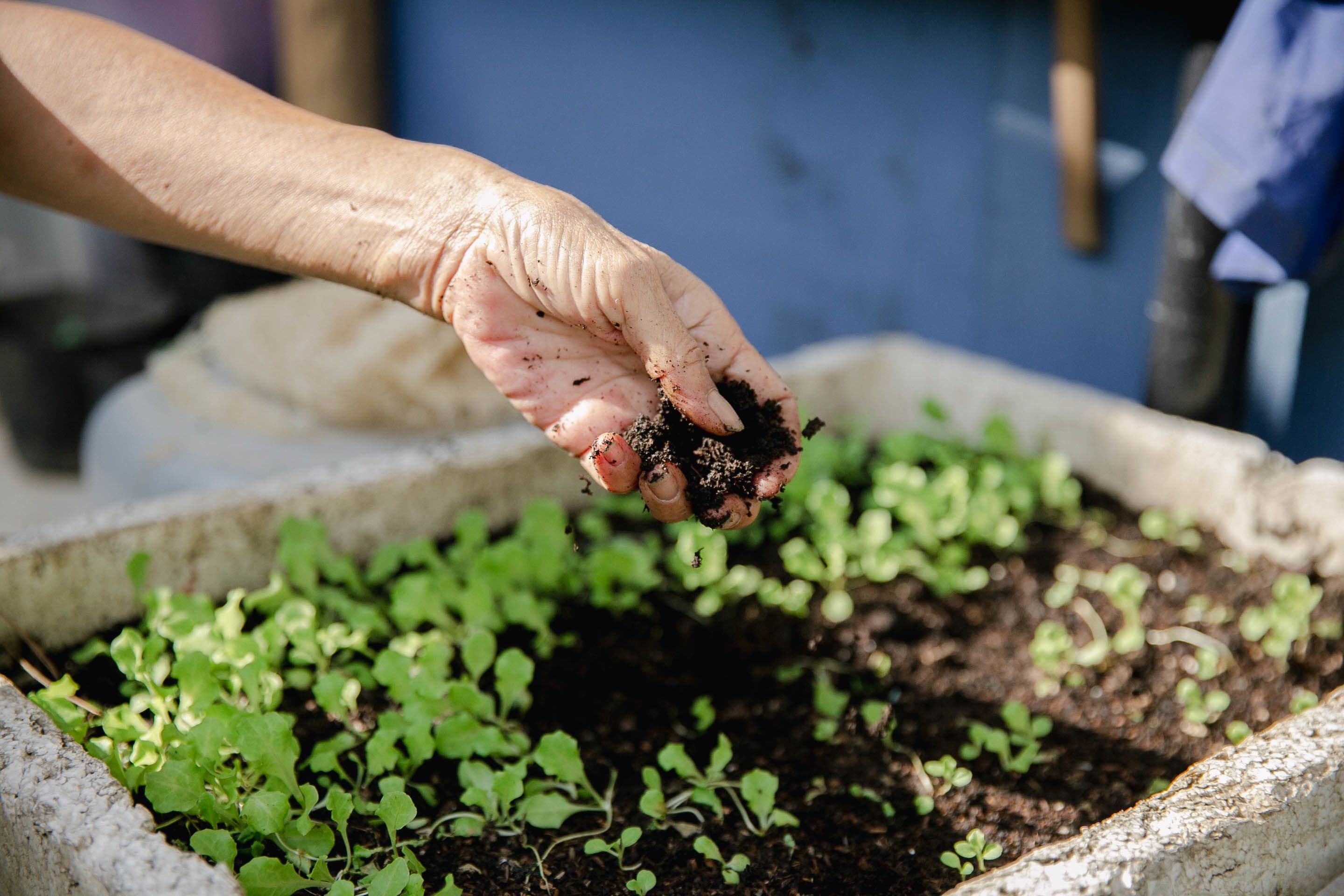
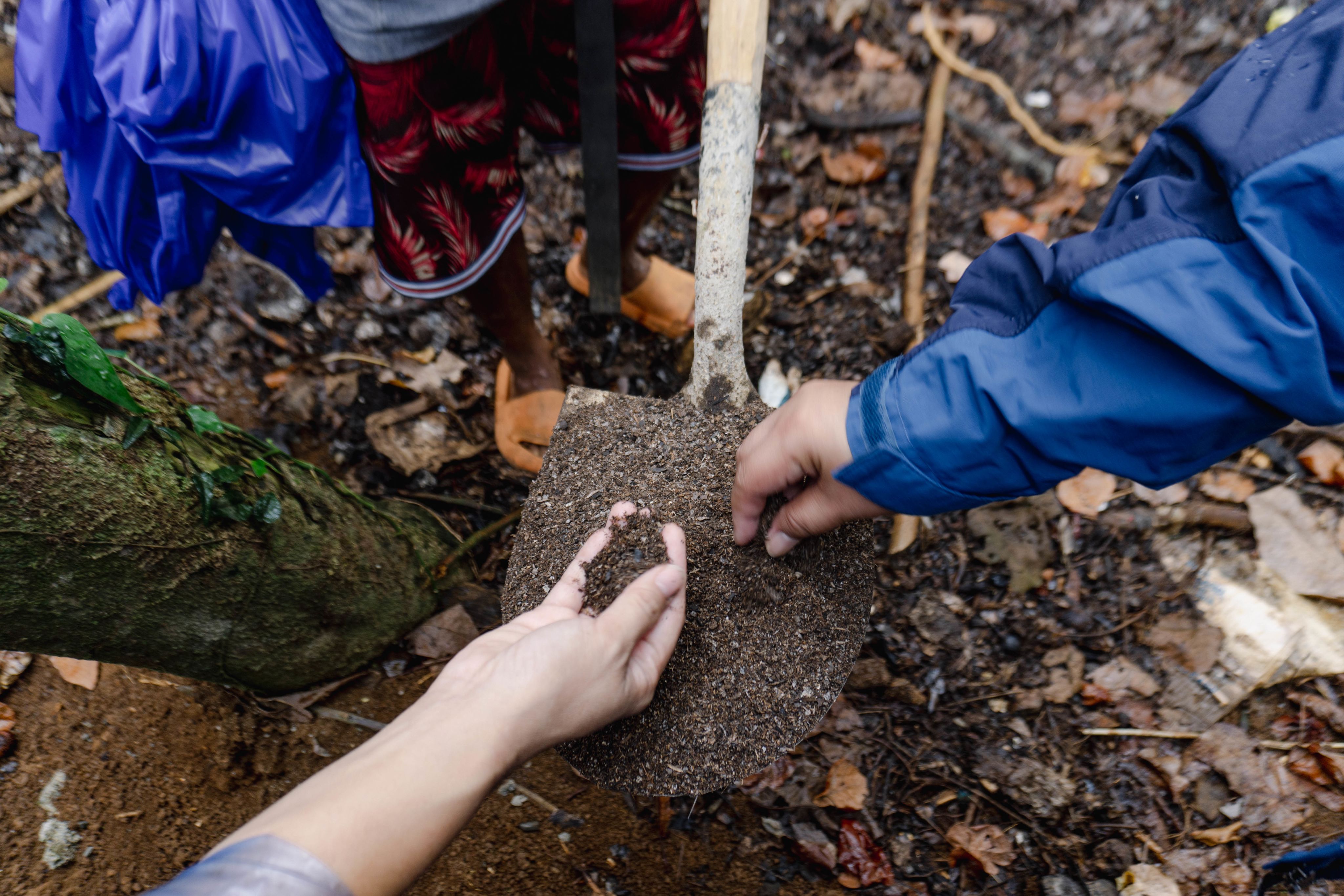
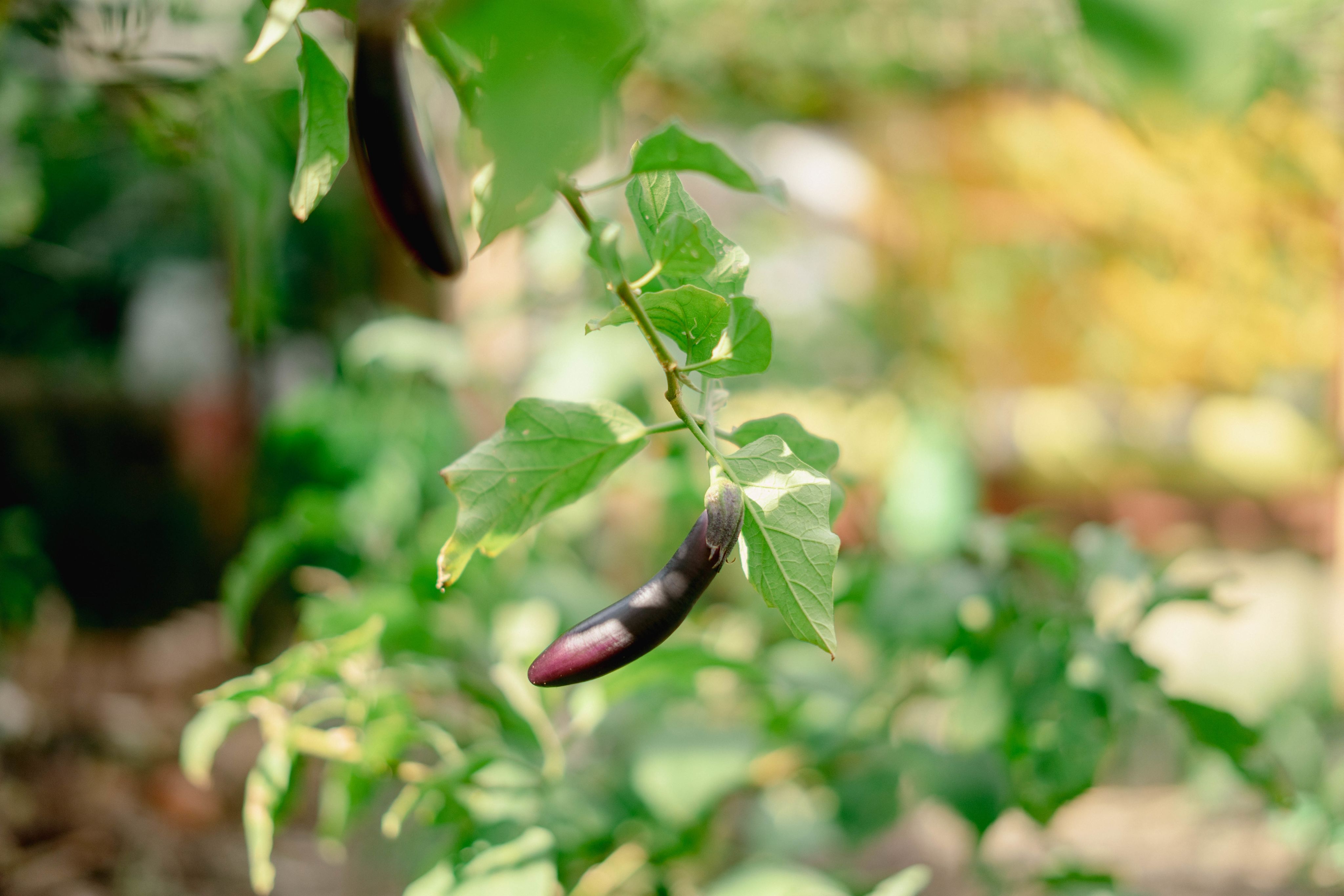
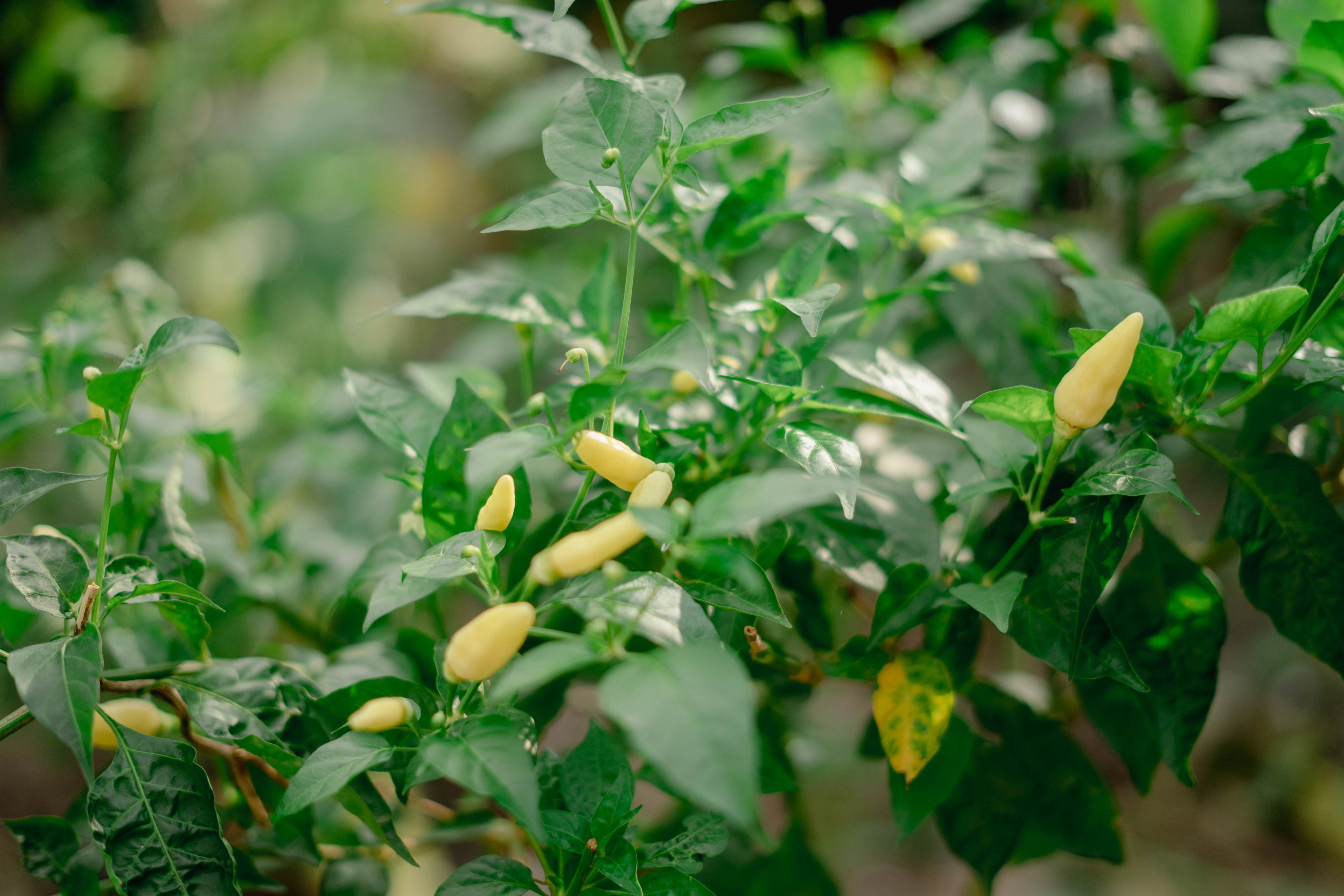
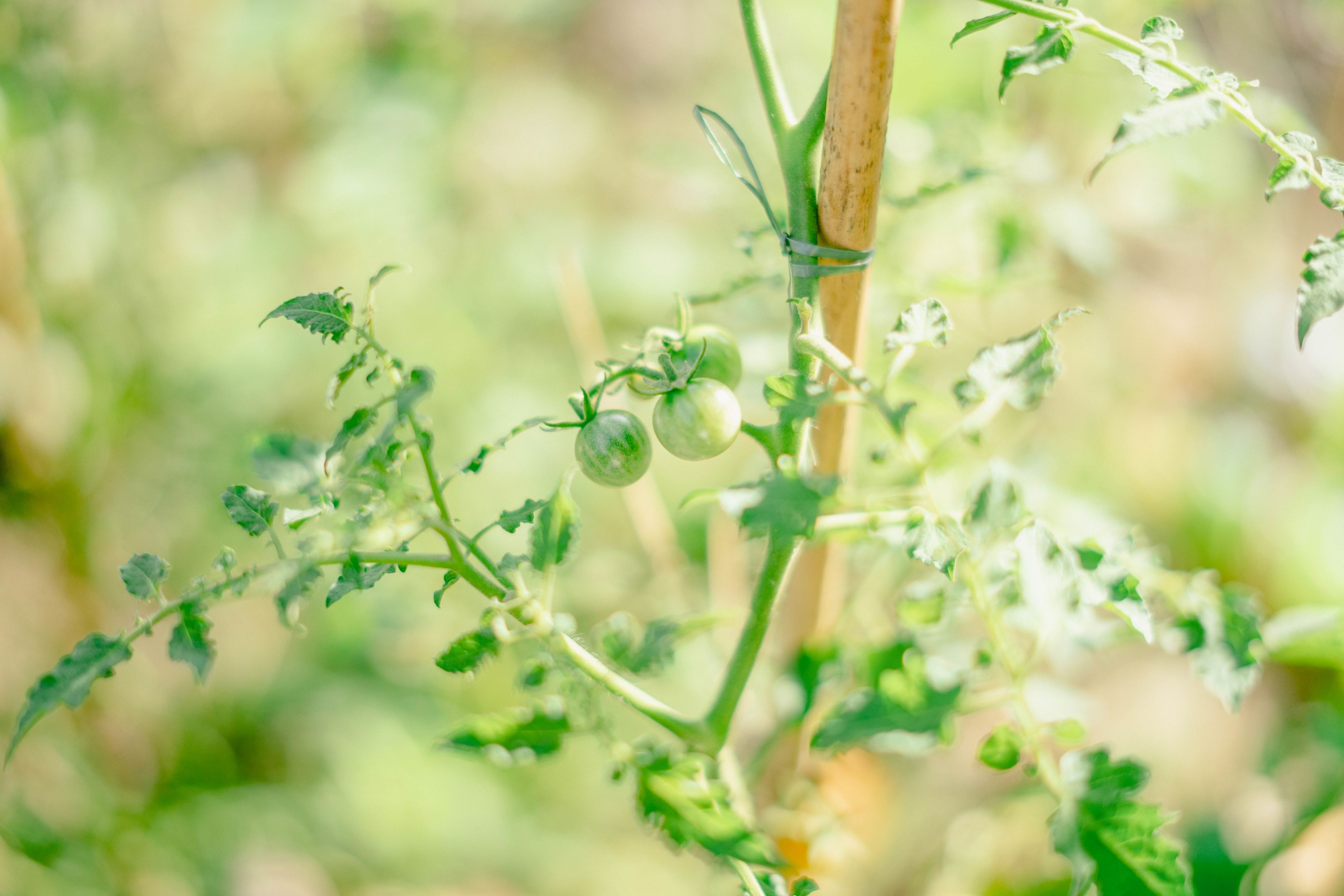
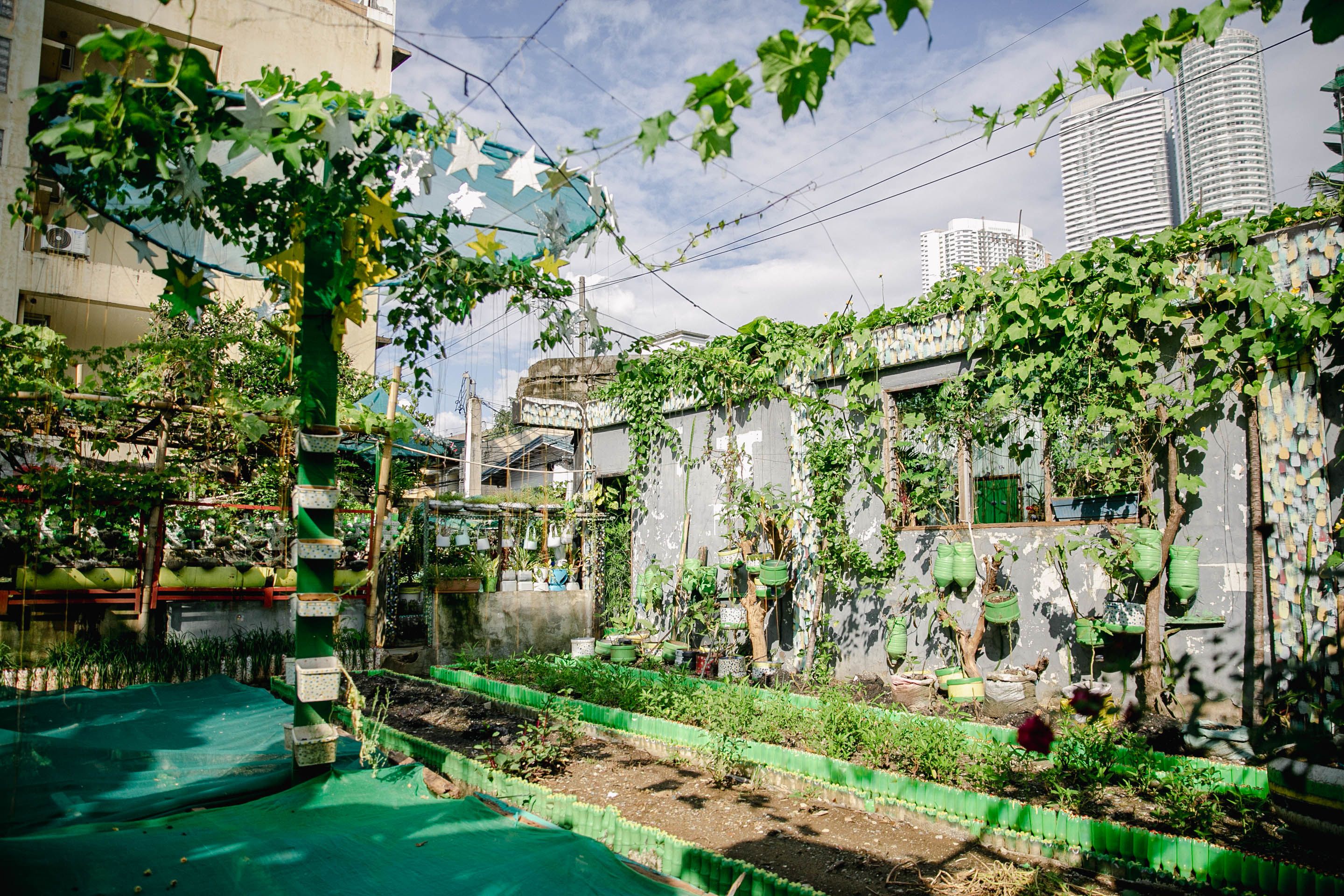
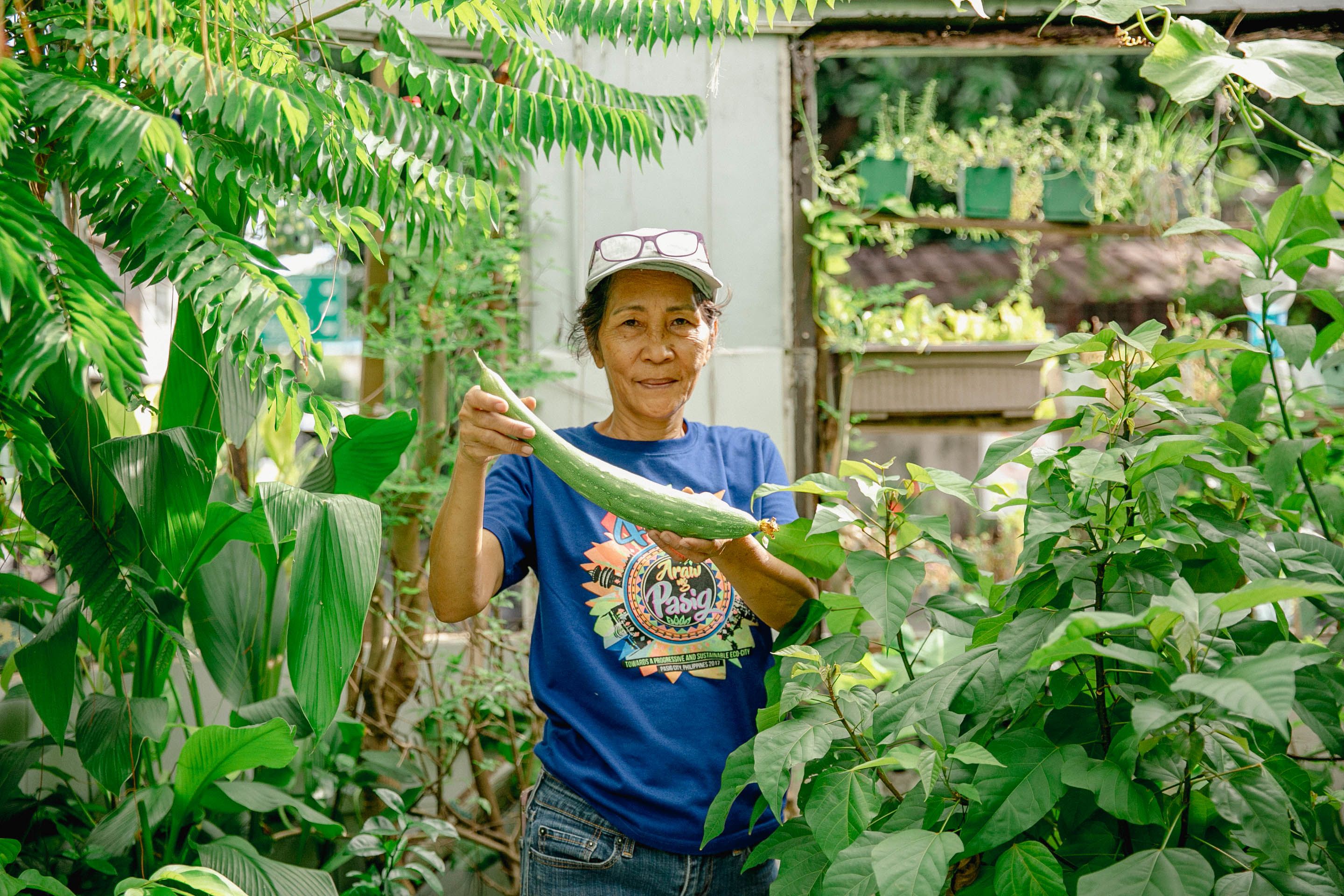
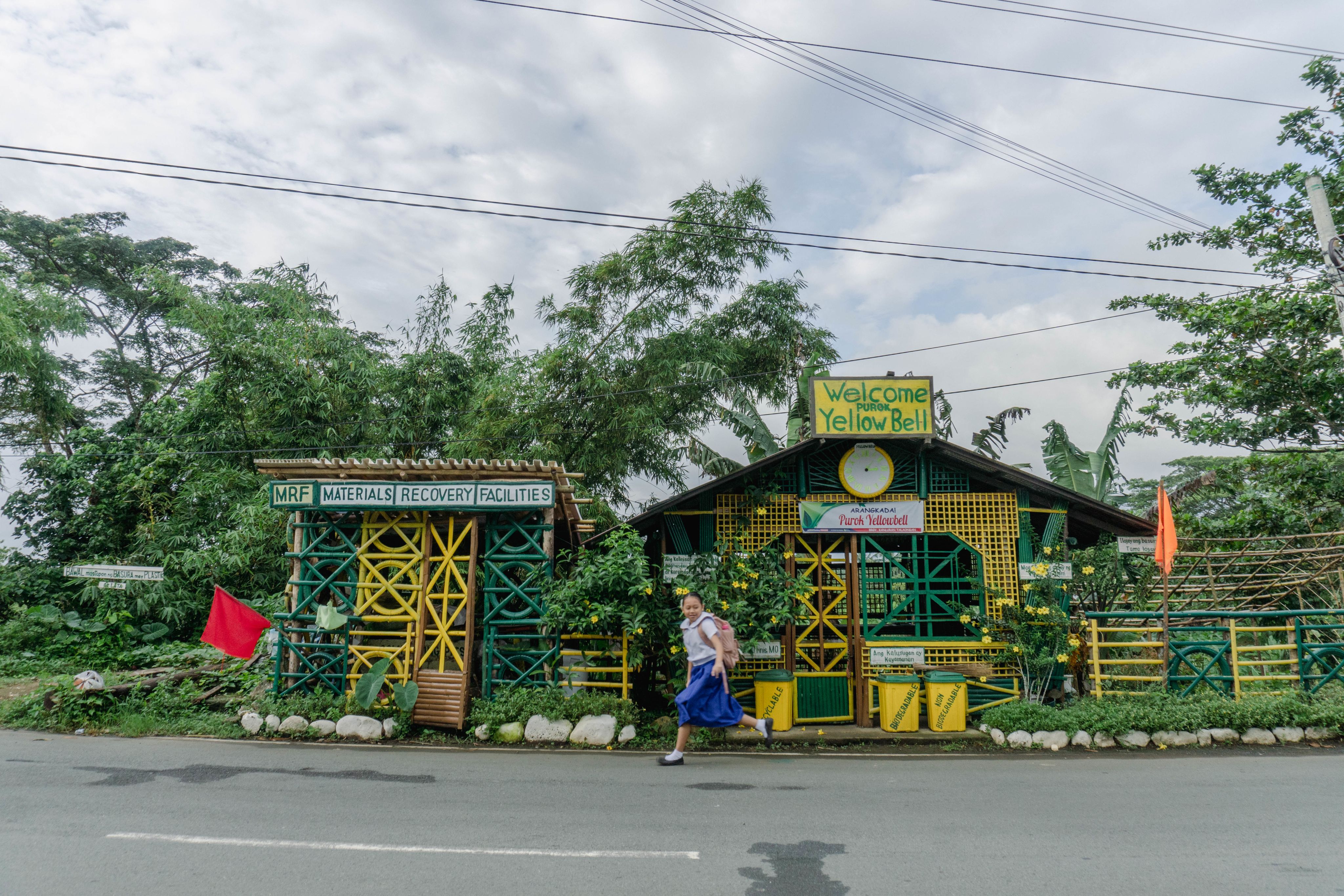

Emma Liqui sprinkles bokashi compost over seedlings that she grows in a recycled styrofoam cooler to add nutrients to the soil and improve its texture.
Emma Liqui sprinkles bokashi compost over seedlings that she grows in a recycled styrofoam cooler to add nutrients to the soil and improve its texture.

Green Space founder Rina Papio and Caliraya Farms’ Tammy Africa show the fertilizer they generated from the composting site. Since its launch in 2020, Papio’s SoilMate app facilitated 11,226 “bucket exchanges,” bringing 119,402 kilos of food waste to its partner composting sites and organic farms.
Green Space founder Rina Papio and Caliraya Farms’ Tammy Africa show the fertilizer they generated from the composting site. Since its launch in 2020, Papio’s SoilMate app facilitated 11,226 “bucket exchanges,” bringing 119,402 kilos of food waste to its partner composting sites and organic farms.

Eggplants are photographed growing at San Antonio’s urban garden. Located in a residential area, the corner lot at General Delgado Street is now teeming with common crops as well as flowering plants.
Eggplants are photographed growing at San Antonio’s urban garden. Located in a residential area, the corner lot at General Delgado Street is now teeming with common crops as well as flowering plants.

Chili pepper, which now costs between USD 9 to USD 16 due to inflation, is grown in San Antonio’s urban garden. According to Emma Lique, she and her team sell their produce at half the market price.
Chili pepper, which now costs between USD 9 to USD 16 due to inflation, is grown in San Antonio’s urban garden. According to Emma Lique, she and her team sell their produce at half the market price.

In addition to common crops, the custodians of San Antonio's urban garden also grow cherry tomatoes.
In addition to common crops, the custodians of San Antonio's urban garden also grow cherry tomatoes.

Tall buildings loom over San Antonio village’s urban garden in Pasig City, Metro Manila, Philippines. The Department of Science and Technology–Food and Nutrition Research Institute’s Food Consumption Survey reveals that the Philippines generates 1,717 metric tons of food waste daily.
Tall buildings loom over San Antonio village’s urban garden in Pasig City, Metro Manila, Philippines. The Department of Science and Technology–Food and Nutrition Research Institute’s Food Consumption Survey reveals that the Philippines generates 1,717 metric tons of food waste daily.

Emma Liqui, Pasig City's street sweeper and the custodian of San Antonio village’s urban garden, shows a sponge gourd that she harvested on the morning of August 17, 2023.
Emma Liqui, Pasig City's street sweeper and the custodian of San Antonio village’s urban garden, shows a sponge gourd that she harvested on the morning of August 17, 2023.

A school girl passes by a Material Recovery Facility (MRF) at Purok Yellow Bell, Barangay Kanluran in Cavinti, Laguna. According to the Commission of Audit, 39.05% of the 42,046 barangays in the Philippines have MRFs.
A school girl passes by a Material Recovery Facility (MRF) at Purok Yellow Bell, Barangay Kanluran in Cavinti, Laguna. According to the Commission of Audit, 39.05% of the 42,046 barangays in the Philippines have MRFs.
With generous support from
Aid to the Church in Need
Dreikönigsaktion
missio Aachen
Text and photos by Bernice Beltran
Edited by Mark Saludes
Produced by June Nattha Nuchsuwan
Published October 26, 2023
© Copyright MMXXIII LiCAS.news
